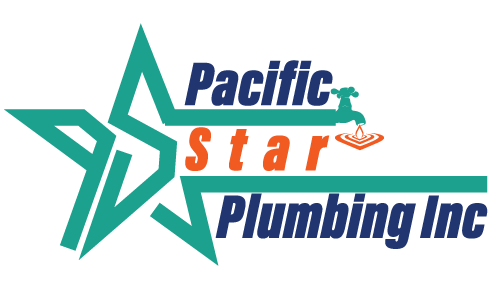Blog

Best Water Heater for Colder Months in CA
As the winter chill settles over California, the importance of a reliable water heater becomes undeniable. The quest for the best water heater for colder months can feel overwhelming, especially when faced with the decision between tankless vs traditional heater options. Each promises to be your best ally against frosty mornings and those dreaded cold showers. But which one truly delivers superior water heater performance when you need it most?
Understanding how these systems handle hot water recovery could be the key to maintaining comfort and efficiency throughout the season. Many homeowners often find themselves frustrated with their water heater’s inability to keep up with demand during the peak winter months. Perhaps you've experienced the familiar disappointment of a lukewarm shower or the wait between family members' showers extending longer than you'd like.
This guide delves into water heater performance, offering insights into not only which type of heater might suit your needs but also how to ensure consistent hot water recovery. By exploring these aspects, you'll be empowered to make an informed decision that keeps your home warm, cozy, and inviting all winter long.
Understanding Water Heater Performance in Cold Weather
Water heater performance during cold spells is influenced by inlet water temperature, ambient air conditions, and insulation quality. As colder groundwater enters the system, the booster must work harder to raise its temperature to your desired setting. In regions of California where temperatures dip significantly overnight, a unit’s efficiency can suffer if it’s not optimized for low inlet temperatures.
Standby heat loss becomes more pronounced when surrounding air is cooler, causing stored water to lose heat faster. The hot water recovery rate, which measures how quickly a heater can deliver the next supply of heated water, is another key metric. When evaluating the best water heater for colder months, scrutinize both recovery rates and energy efficiency ratings to find a unit capable of reliable performance.
Check recovery rates in gallons per hour.
Look for strong insulation quality.
Evaluate performance in real-world conditions.
Tankless Water Heaters: Efficiency and Performance Analysis
Tankless units heat water on demand, eliminating standby energy loss and providing a potentially endless supply of hot water. In colder climates, flow rate can be reduced since the heater must raise water from a lower starting point. High-capacity models often integrate advanced burner controls or larger heat exchangers to maintain flow rates.
Even so, cold-weather performance hinges on proper sizing and installation. Freeze protection measures such as built-in recirculation pumps or insulated piping are essential. Compared to traditional systems, tankless units offer lower operating costs when hot water usage is spread throughout the day. However, during sustained high-volume demands, flow rates may be limited unless a high-output model is chosen.
Endless hot water supply when sized properly.
Compact design saves space.
Energy-efficient for households with moderate demand.
Traditional Water Heaters: Reliability and Capacity Comparison
Traditional storage water heaters rely on insulated tanks to hold and heat water continuously. This makes them ideal for households with high peak demand. Their capacity, typically measured in gallons, determines the initial draw before recovery begins.
During colder months, standby heat loss increases, but good insulation can mitigate these losses. Compared to tankless systems, storage units may offer faster recovery in large households when properly sized. For those prioritizing reliability and minimal maintenance, traditional heaters can be a dependable choice through California’s colder months.
High storage capacity for peak demand.
Reliable operation with simple maintenance.
Consistent hot water supply for families.
Factors Influencing Hot Water Recovery in Winter
Several variables impact how quickly a water heater can replenish heated water. Cold inlet temperature, burner or element size, and tank insulation all play significant roles. Lower inlet temperatures force the heating system to work harder, reducing recovery speed.
Household usage patterns and simultaneous appliance draws further influence recovery. Families with overlapping showers or frequent dishwasher and washing machine cycles require a heater with high recovery ratings. Proper venting and insulation also help maintain optimal hot water recovery.
Energy Efficiency: Impact on Operating Costs and Performance
Operating costs and performance are tied to efficiency. Energy factor (EF) and Uniform Energy Factor (UEF) ratings provide standardized measures to compare models. Higher values indicate better heat transfer and lower standby losses. Insulating hot water lines and using smart controls to schedule heating during off-peak hours optimize performance.
Sizing Your Water Heater for California's Colder Months
Correct sizing is essential to ensure a water heater delivers adequate hot water. For traditional tanks, calculate peak hour demand and add a margin for colder inlet temperatures. For tankless units, size by flow rate rather than storage capacity. Choose a model rated for your region’s lowest inlet temperature.
Maintenance Tips for Optimal Water Heater Performance
Routine maintenance extends the lifespan and efficiency of any water heater. Flushing the tank annually removes mineral buildup that slows hot water recovery. Inspect the sacrificial anode rod every two years and replace when over 50% corroded. For tankless systems, clean the heat exchanger regularly to maintain performance.
Smart Technology Integration for Enhanced Water Heating Experience
Smart controls can transform how homeowners interact with water heaters. Remote monitoring apps allow you to adjust temperature settings, schedule heating cycles, and receive maintenance alerts. By programming off-peak heating times, you can reduce costs and maintain comfort.
Installation Considerations for Cold Weather Adaptation
Proper installation ensures reliable performance in colder months. Insulate inlet and outlet pipes to minimize heat loss. In outdoor installations, protect the heater and exposed pipes with freeze-resistant enclosures or heat tape. Positioning the heater closer to demand points reduces heat loss and improves response time.
FAQs
How often should I service my water heater?
It’s recommended to perform maintenance at least once a year to ensure consistent performance during colder months.
Which is better for families: tankless or traditional heaters?
Tankless systems suit smaller households with moderate demand, while traditional heaters serve larger families with high peak usage.
Can a tankless heater handle multiple showers at once?
Yes, but only if properly sized. Choose a model rated for simultaneous fixture use during the coldest months.
Does pipe insulation really improve efficiency?
Yes, insulation reduces heat loss in distribution lines and helps maintain water temperature during cold weather.
How do I choose the best water heater for colder months?
Consider efficiency, recovery rate, and proper sizing. For expert help, visit our contact page.
Choosing the Ultimate Water Heater for Your Winter Needs
Selecting the best water heater for colder months involves balancing efficiency, hot water recovery, and reliability. Whether you prefer the on-demand benefits of a tankless system or the steady capacity of a storage tank, understanding performance factors is crucial.
Evaluate your usage patterns carefully, and invest in proper sizing and installation to ensure seamless performance all winter long. For expert plumbing support, explore our services in San Clemente and keep your home warm, cozy, and efficient this season.

We Cover Areas
Aliso Viejo, CA
Irvine, CA
Laguna Hills, CA
San Clemente, CA
CONTACT uS
San Juan Capistrano, CA
Monday Through Friday, 8:00 a.m. to 5:00 p.m.
Cash, Venmo, Zelle and Credit & Debit Cards

@ 2025 - Pacific Star Plumbing INC| All Rights Reserved






